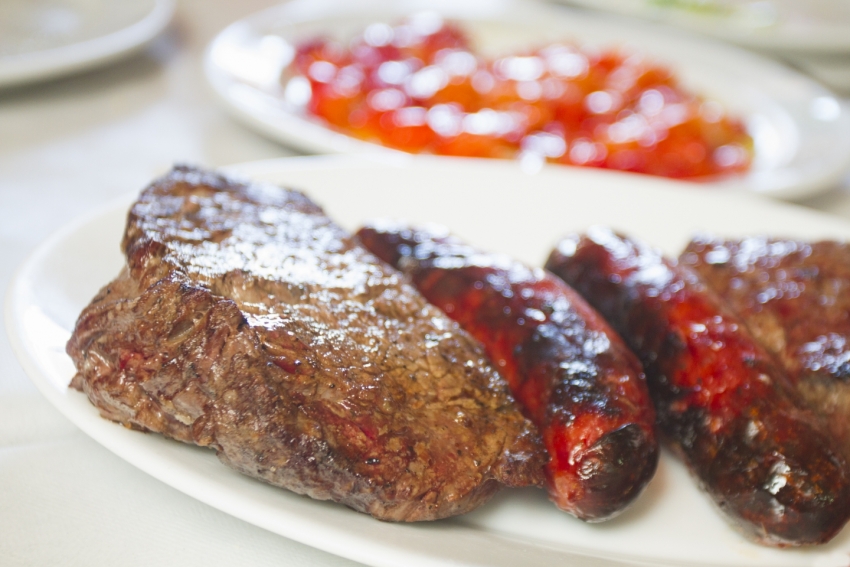Canary Islands Cheese: A Quick Guide To The Best Stuff
Go to any market or even local supermarkets and you find piles of cheese made in the Canary Islands but not all of it is the real deal. Here's how you recognise the good stuff...
The best Gran Canaria and Canary Islands cheese is made from goat and sheep cheese although most of the cheese on sale in supermarkets is a blend of cow and goat or sheep cheese.
If a cheese has a picture of a cow on the label, you know it is a mixture. Or if it says 'mezcla de leche de cabra, oveja y VACA'. This doesn't mean that it won't be nice but it will be blander tasting and with a smoother texture than the proper stuff.
Types of Canary Islands cheese
There are well over 100 cheeseries on Gran Canaria, 500 across the islands, and Canarians love their cheese so much that they eat over 11kg per person every year.
Queso tierno is fresh cheese that hasn't had a chance to ripen. It is pure white and roughly equivalent to Mozarella. It's often served as a starter along with sweet quince or guava jelly, or in salads. Go for a brand like Pajonales (black tub) that is pure goat cheese and has some flavour because queso tierno can be bland.
Queso semi tierno is cheese that has had some maturing time in a cellar or cave. It's still creamy and soft but has developed some flavour and sharpness. Many Canarian cheeses have gofio or pimentón rubbed into the rind during then curing process.
Queso duro or maduro is mature cheese that has plenty of acidity and flavour. It can still be fairly soft but some go rock hard (great for grating over pasta or using to make pesto).
Queso flor is a sheep milk cheese made using thistle sap rather than rennet. It is soft and tastes of grass and socks; a real cheese-lovers cheese. The real stuff is just called flor but you often see semi-flor which uses some rennet and is harder and milder in flavour. Proper flor comes in small wheel only a few centimetres high because it doesn't hold its shape well enough to be bigger or taller. Flor de Guia cheese has its own EU designation of origin and has to be made mostly from local sheep milk fro sheep that roam free to graze. It was first mentioned in 1526!
Queso Majorero is cheese made from goat milk in Fuerteventura. It tends to be drier, spicier and more acidic with a stronger flavour than Gran Canaria cheeeses. Try the maduro or semi curado with the pimentón rind by the Maxorata brand. This is sold in local supermarkets and has won lots of medals at the World Cheese Awards.
Queso ahumado is smoked cheese and is traditionally made on El Hierro island.
Find the best cheese in Gran Canaria
Gran Canaria cheeses tend to be slightly sweet with bitter, herbal notes and small irregular holes. Many are made from raw goat and sheep milk which is quite safe because the Canary Islands are brucelosis-free.
A lot of the tastiest cheeses come from mountain areas like Valsequillo and Tejeda where the goats and sheep get to graze, or at least are fed with fodder harvested on the island.
Local markets are an excellent place to try and buy local cheeses as you always get a nibble before you have to choose. Don't be afraid to say what you like.
"Mas fuerte" means stronger while "mas suave" means milder.
Local shops and delis also allow tasting,as do some supermarket deli counters (although Covid has made this rarer).
No matter where you buy your cheese, try to keep it out of the fridge or at least let it warm up before you eat it. Refrigeration can change the texture of cheese, especially flor de Guía.
Canary Islands cheese for vegetarians
All Canary Islands cheese sold in shops and markets is made with vegetarian-friendly rennet and pure queso flor is made using thistle sap rather than rennet to curdle the milk.
Top 10 Things You Have To Eat In Gran Canaria That Aren't Papas Con Mojo
Everybody loves a plate of papas con mojo, but there's more to Gran Canaria food than salty potatoes. From great steak to cactus fruit, here's ten things that have to try before you leave.
Guia: Gran Canaria's Cheese Town
It says a lot about Guía that it's cheese is more famous than the actual town. It's pretty enough but a sleepy kind of place, especially compared with Galder next door.
Santa Maria de Guía's church square and the cobbled streets running off it have their charm. The problem with Guía from a vistor's point of view is that there isn't much do there except for look at it. The Sunday market in the square only has five stalls: It's the place to go to get great Flor de Guia cheese right at source but doesn't sell much else.
Flower cheese
Flor de Guía is a soft, creamy and slightly bitter goat and sheep cheese with a faint odour of socks. It comes in wheels only a few inches thick and tends to sag with age. It's great stuff and is made with cardoon flower sap rather than rennet, making it the only local cheese suitable for veggies.
Cheese festival
Guía perks up during the annual Fiesta de Queso (cheese festival) in April/ May. It's the time to visit with lots of cheese and food stalls and general celebrations of anything cheesy.
If you're in Guía outside fiesta time, head to La Quesera organic cafe for a great selection of local cheese and wine. It's in a 19th Century house and chapel and has an organic garden in its courtyard. The address is Calle Pérez Galdós 27.
Gran Canaria Info recommends:
- Default
- Title
- Date
- Random














